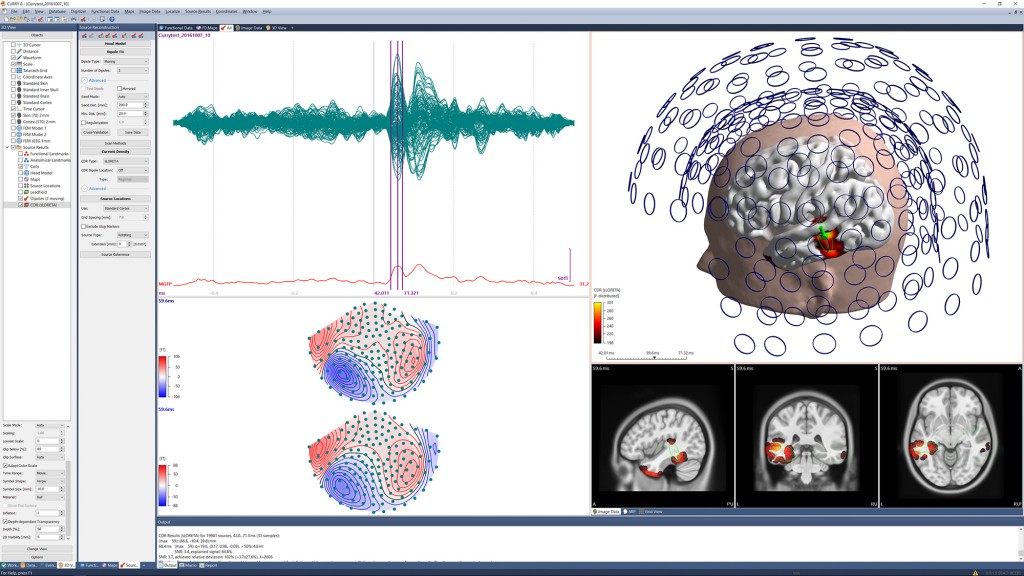Magnetoencephaloghy (MEG) and CURRY – A long history together
The CURRY NeuroImaging platform and MEG have a history stretching back over 30 years. CURRY was first conceived of in the late 1980s as an MEG analysis tool. Software development by its core engineering architects has continued uninterrupted until today.
Already by 1999 studies were being published describing the application of CURRY to cortical localization of auditory, visual and tactile stimulation based on EEG and MEG activity. Localizing epileptic discharges, identifying functionally critical areas of the brain controlling language and memory testing soon followed. Processing algorithms were validated for evaluation of mild to severe traumatic brain injury.
The early 2000s saw a rapid expansion of the use of CURRY in both the research and clinical communities. The benefits associated with CURRY’s ability to integrate MEG with EEG and co-register these high temporal resolution functional imaging data with structural neuroimaging data including MRI, CT, DTI, PET, SPECT and fMRI accelerated the adoption.
Early clinical adopters supported and championed the benefits of the source localization tools, contributing to the development of specific source analysis billing codes for EEG and MEG.
Today, CURRY is the industry-standard software platform for the worldwide clinical MEG community, particularly for those assessing epilepsy. CURRY is certified by the FDA, CE Mark and other regulatory bodies worldwide.


